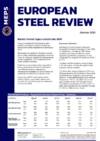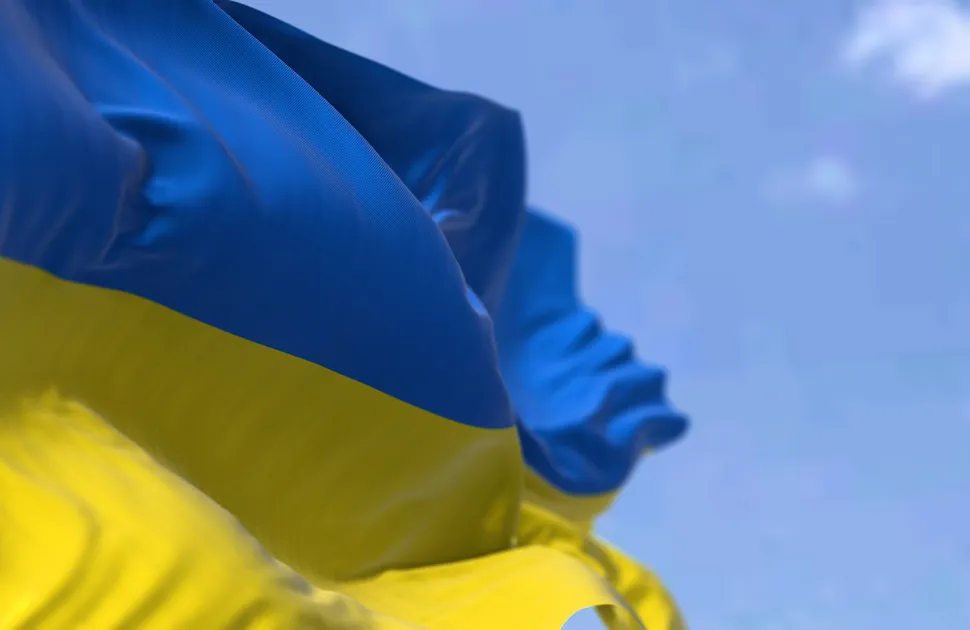War returns to Europe – What does it mean for steel buyers?
After weeks of escalating political tensions, Ukrainian fears of a Russian invasion came to fruition on 24 February 2022. European steel markets are rattled, as the repercussions of the war begin to spread across the globe.
Western nations are responding to the invasion by imposing economic sanctions on Russia, as well as Belarus for its role in allowing Russian troops to advance on Ukraine through its territory. The sanctions having the greatest impact on international steel markets are those which obstruct the access of Russian banks and businesses to financial systems. The inability of Russian enterprises to receive payment for energy and steel will cause significant reductions in the availability of these essential commodities.
Consequently, European steel buyers are facing the prospect of severe upward pressure on finished steel values. Price volatility is expected to be a feature of the market in the short term. Nevertheless, four key drivers of world steel prices are emerging:
- Energy prices
- Steelmaking raw material costs
- Supply of semi-finished and finished steel products
- Consumer spending and investor confidence
1. Sanctions cause Russian oil and gas prices to skyrocket
Russia is the largest natural gas exporter in the world, and 40 percent of EU gas imports originate from that nation, primarily through the Nord Stream 1 pipeline.
Approval of Nord Stream 2, a project designed to double the flow of natural gas into Europe, was halted by Germany. While natural gas continues to flow into Europe, the threat of further sanctions on gas supplies will drive energy prices higher. European benchmark Dutch TTF Gas Futures prices have surged above €200 per MWh since the war began – over 50 percent higher than the peak reached in December 2021.
Furthermore, Russia is the second largest crude oil exporter in the world, and it accounts for more than 25 percent of the EU’s oil imports. Brent crude oil futures have increased by more than 30 percent since the onset of the war. Consequently, the price of fuels will escalate, raising the cost of shipping and road transport for global supply chains. The recently announced US and UK ban on Russian oil imports will almost certainly send prices higher still.
Elevated energy costs were already applying upward pressure to steel values. A number of European steelmakers are cutting output or idling their production facilities, amid their surging outlay on electricity and gas. They are also attempting to calculate a selling price for their steel products that will prevent lossmaking if costs escalate further.
The ability of European energy companies to diversify their supply base is limited, such is their reliance on Russian oil and gas. It remains to be seen to what extent alternative suppliers, in Norway and the Middle East, could ramp up supply.
The ongoing crisis is likely to accelerate the European transition to renewable energy. The UK government has announced that businesses will need to operate without Russian oil from the end of 2022, and the EU plans to be independent of Russian fossil fuels by 2030.
2. Cuts to raw material supplies will apply further upward pressure
Rising raw material costs are compounding the problem of growing production expenditure.
Benchmark Turkish import scrap values have risen by around US$150 per tonne (30 percent), as traders price in the limited availability of steel and raw materials. Fewer shipments of CIS-origin pig iron may cause steelmakers to rely more heavily on scrap to charge their furnaces. Moreover, Russia is a significant supplier of coal to Eastern and Central European mills. Coking coal values are likely to surge as supply from this country is restricted.
Russian and Ukrainian miners occupy the 5th and 7th spots in terms of global iron ore production. Iron ore values have risen by around US$20 per tonne since the onset of the war. However, iron ore price drivers are dominated by the supply and demand dynamics between China and Australia. While Australia remains the key iron ore exporting nation, the possibility of resurgent steel production in China, the biggest consumer of seaborne iron ore, could limit the ability of European steelmakers to secure alternative sources.
Rising transport costs are likely to apply further upward pressure, due to the surge in oil prices. Furthermore, shipping lines are unlikely to transport raw materials from sanctioned nations and may avoid the Black Sea altogether, due to the heavy military action in the region.
3. The CIS steel supply chain is shutting down
Of the 8.39 million tonnes of semi-finished steel imported into the EU & UK, in the first eleven months of last year, more than 85 percent originated from Russia, Ukraine and Belarus. Market observers suggest that the availability of slab will be worse than that of billet and blooms.
The European bloc imported 5.8 million tonnes of slab between January and November 2021 from the affected CIS nations. More than 50 percent of this material was destined for Italy and Belgium. In the former, several mills have already announced production stoppages, due to a lack of supply of essential feedstock.
Furthermore, over 1 million tonnes of billets and blooms originate from Russia, Ukraine and Belarus. Curtailed availability will greatly affect rerollers in Bulgaria and Italy, who imported 559,000 and 374,000 tonnes, respectively.
Deteriorating supply of finished steel is also envisaged, in the short term. CIS mills accounted for one quarter of European imports of finished steel in 2021. The product groups most affected by worsening availability will be plate, merchant bar and rebar. Approximately 57 percent of plate import volumes will be removed from the market, and a 40 percent shortfall of third country rebar and merchant bar volumes is likely, in the short term.
European buyers are seeking alternative sources of supply. However, finished steel prices will inevitably be driven higher as more customers seek to make use of a smaller pool of suppliers. Indian mills may be utilised, but ongoing port congestion and poor vessel availability will inhibit substantial volumes arriving from that country. Turkish mills are unlikely to be able to plug the gap, due to their heavy reliance on feedstock provided by Ukrainian and Russian suppliers.
Some sources suggest that EC quotas could be revised to allow greater flexibility, in terms of tariff-free production volumes being permitted to flow into Europe. At the time of writing, no announcement of quota relaxations has been made. Certainly, there is growing pressure, from steel buyers, to modify or suspend the import measures.
4. Consumer and investor confidence is diminishing
In the medium term, rising energy prices and cost inflation are likely to impede economic recovery from the Covid-19 pandemic. Consumer discretionary spending is likely to fall, as a greater proportion of incomes is spent on household energy bills and vehicle fuel. Furthermore, Ukraine and Russia are both substantial producers of wheat and other crops, and supply issues are already adding to the rising costs of food.
Meanwhile, investor confidence is diminishing. Uncertainty regarding future economic sanctions is likely to deter the flow of capital into steel intensive projects. Furthermore, supply chains have not fully recovered from the disruption brought about by the pandemic. Industry participants in the European automotive and construction sectors are highlighting renewed pressures on the availability of essential components and raw materials.
European steel market clouded by uncertainty
Most European steelmakers are backing away from the market, in order to evaluate the supply and cost of both energy and raw materials. Western sanctions could continue ramping up, and Russia is likely to impose retaliatory measures, adding to the current market volatility. Nevertheless, early price indications for March represent substantial increases, month-on-month.
Furthermore, the war is highlighting the fragility of global supply chains, and the inextricable interdependence between nations. In the long term, an accelerated transition to renewable energy, and a shift in Europe’s oil and gas supply base, is envisaged.
Related Articles
Part 1 War returns to Europe - How will it affect steel supply?
Part 2 War returns to Europe - How will it affect steel feedstock?
Part 3 War returns to Europe - How will it affect steel demand?
EU outlaws Russian steel
Steel prices surge as war in Europe disrupts supply chains

Source:
European Steel Review
The MEPS European Steel Review is an informative, concise and easy-to-use monthly publication, offering unique professional insight into European carbon steel prices.
Go to productRequest a free publication





